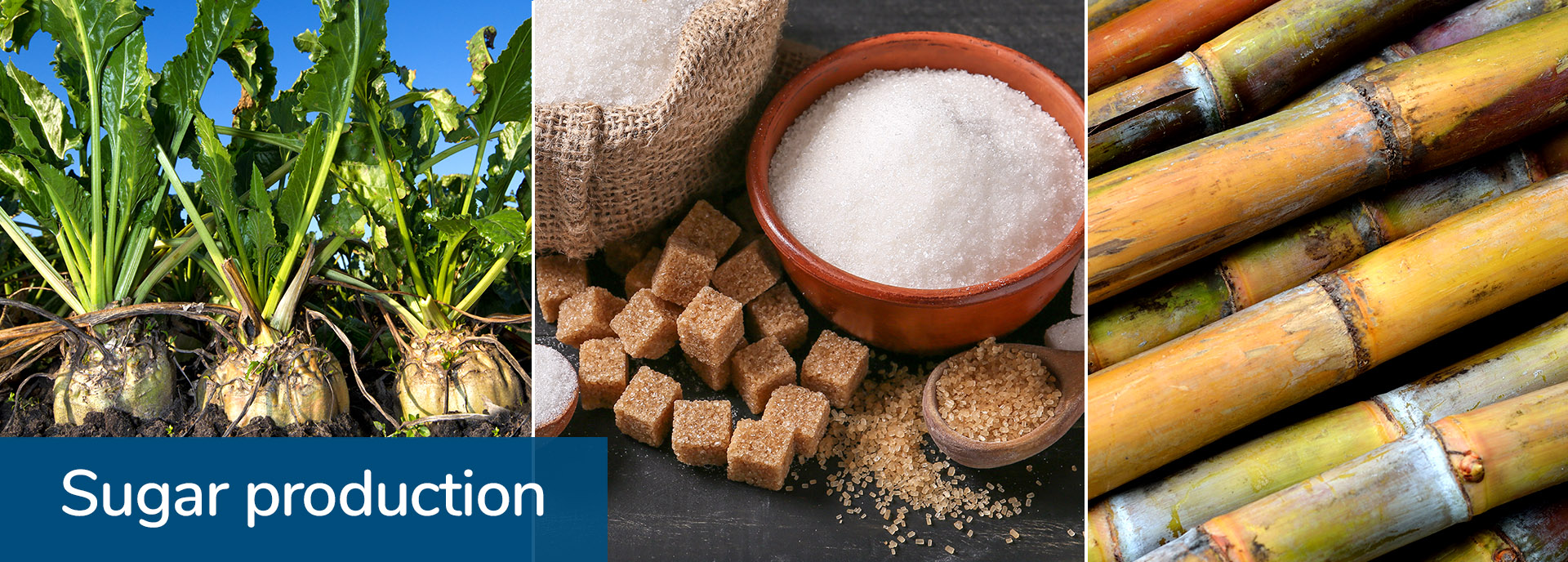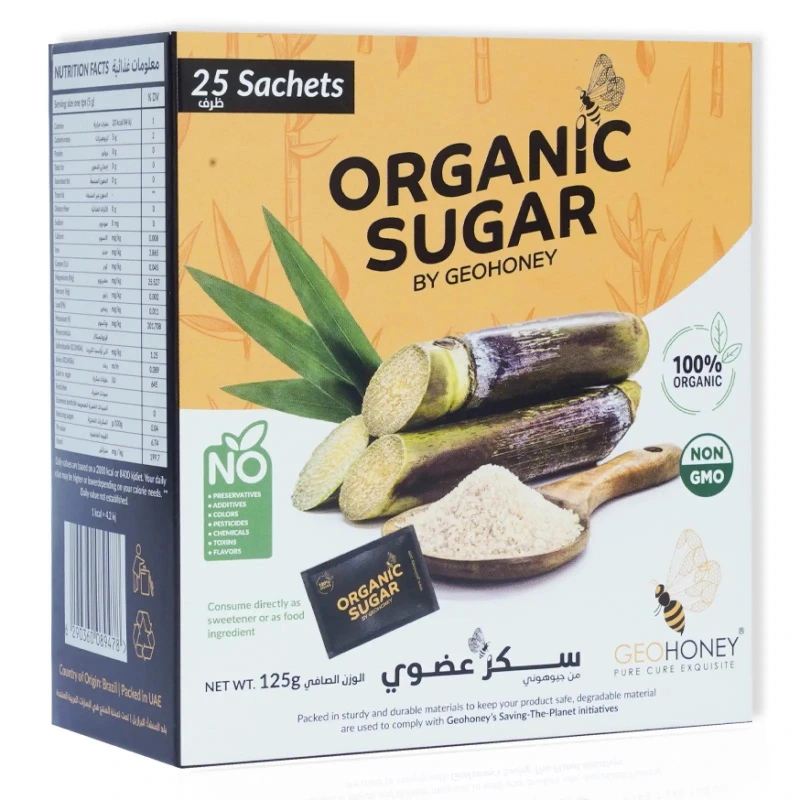Discovering the Versatile Use Sugar Cane Beyond Sugar
Sugar Cane is frequently linked only with sweeteners, yet its applications prolong much past. This flexible plant plays a crucial role in various sectors, including biofuels and bioplastics. Furthermore, its fibers add to sustainable building and construction and fabrics. The financial implications of sugar Cane production further emphasize its relevance. As innovations remain to arise, the potential of sugar Cane to drive eco-friendly and financial improvements comes to be progressively obvious. What various other surprises does this resilient plant hold?
The Function of Sugar Cane in Biofuels
As countries look for sustainable energy resources, sugar Cane has actually emerged as a vital player in the biofuels field. This tropical plant is abundant in sucrose, which can be fermented to generate ethanol, a sustainable gas option to fossil fuels. The growing of sugar Cane for biofuel production not only lowers greenhouse gas discharges but likewise contributes to energy protection, specifically in sugar-producing nations.
Moreover, sugar cane-derived ethanol can be mixed with gasoline, enhancing its octane score and lowering dependence on non-renewable sources. The by-products of sugar Cane handling, such as bagasse, are important for creating electrical power, making the whole production cycle energy-efficient.
Research study proceeds to explore innovative methods for making best use of energy return from sugar cane, strengthening its duty in the shift to cleaner power services. As global need for sustainable gas increases, sugar Cane attracts attention as an indispensable part of the biofuel industry.
Sugar Cane as a Resource of Bioplastics
The environmental influences of plastic air pollution are significantly concerning, sugar Cane provides an encouraging choice as a resource of bioplastics. Originated from renewable energies, bioplastics made from sugar Cane can substantially decrease dependence on petroleum-based plastics. These bioplastics are generated through the fermentation of sugars drawn out from the cane, leading to products that can be compostable or biodegradable, depending on their formulation.
Making use of sugar Cane bioplastics not only decreases carbon exhausts yet additionally promotes lasting farming methods. By making use of farming waste and byproducts, the total ecological impact of manufacturing is reduced. In addition, items made from sugar Cane bioplastics can seamlessly integrate into existing waste management systems, addressing worries about waste build-up.
As sectors seek lasting options, sugar cane-based bioplastics stand for a feasible alternative that straightens with international efforts to combat plastic pollution and cultivate a round economic climate.
Medicinal Applications of Sugar Cane
Sugar Cane is acknowledged for its antioxidant properties, which add to different wellness advantages. In addition, it has actually been made use of in conventional solutions across societies, highlighting its importance in natural medication. These features emphasize the possibility of sugar Cane in the field of medical applications.
Antioxidant Characteristics of Walking Cane
Numerous studies have actually revealed that sugar Cane has significant antioxidant homes, making it a beneficial component in medical applications. The phenolic compounds located in sugar walking cane, such as flavonoids and phenolic acids, add to its capability to reduce the effects of free radicals, thereby decreasing oxidative stress in the body. This antioxidant activity is connected to various health benefits, consisting of boosted cardio wellness and improved immune feature. Furthermore, sugar Cane extracts have actually been revealed to exhibit anti-inflammatory results, which can further support total wellness. By combating oxidative damages, sugar Cane might contribute in the avoidance of persistent conditions, making it a fascinating topic of study for its potential restorative usages in modern-day medication.
Traditional Solutions and Makes Use Of
While modern medicine commonly counts on artificial substances, conventional solutions using sugar Cane highlight its longstanding significance in different cultures. In many tropical regions, sugar Cane juice has been used as an all-natural remedy for conditions such as dehydration and digestion problems. Its high water web content and important nutrients make it a favored therapy for urinary system system infections and kidney rocks. Furthermore, sugar Cane is believed to possess anti-inflammatory residential properties, aiding in the alleviation of aching throats and respiratory system problems. Folk medication commonly integrates sugar Cane in concoctions to improve energy and boost general well-being. These age-old practices underscore the convenience of sugar walking stick, additional reading expanding its worth past sweet taste to encompass health and wellness and health applications.
Eco-Friendly Construction Materials From Sugar Cane
Sugar walking stick, commonly recognized for its sweet yield, is getting attention as a source of environment-friendly building and construction materials. These materials provide sustainable building remedies, featuring naturally degradable composites that decrease ecological effect. Additionally, sugar cane-derived items offer effective insulation residential properties, boosting energy performance in frameworks.
Sustainable Building Solutions
As the worldwide demand for sustainable building materials increases, ingenious remedies stemmed from sugar Cane have arised as a practical option. This renewable energy provides various applications in environment-friendly structure remedies, especially through its byproducts. Sugar Cane fibers, recognized for their toughness and durability, can be made use of in producing insulation materials and composite panels. Additionally, the juice and molasses from sugar Cane can be refined right into bio-based adhesives, lowering reliance on petroleum-based items. The usage of sugar Cane not just decreases waste yet additionally contributes to decrease carbon emissions throughout production. Integrating these materials into construction methods sustains the round economic climate, advertising sustainability while dealing with the pressing ecological obstacles dealt with by the building industry.
Eco-friendly Compound Products
Biodegradable composite products have amassed interest as sustainable alternatives in building, specifically those originated from sugar cane. These materials use the fibrous byproducts of sugar walking cane, such as bagasse, to create compounds that are both light-weight and solid. By incorporating these all-natural fibers, manufacturers can generate materials that decrease reliance on non-renewable sources and traditional plastics. The sustainable nature of sugar Cane composites not just reduces environmental influence but also sustains farming economic situations by providing extra revenue streams for farmers. In enhancement, the biodegradability of these composites guarantees that they do not add to long-term waste in garbage dumps. As the construction market looks for greener services, sugar cane-derived composites offer an appealing course towards much more environmentally friendly structure practices.

Insulation Characteristics and Conveniences
The insulation buildings of environmentally friendly construction products stemmed from sugar Cane offer considerable benefits in power efficiency and climate control. Sugar Cane fibers possess natural insulating high qualities that assist control indoor temperatures, reducing the need for excessive home heating or cooling. This characteristic adds to reduce power intake, advertising sustainability in structure techniques. Furthermore, making use of sugar cane-based insulation products is advantageous for indoor air quality, as they are much less most likely to discharge volatile natural substances (VOCs) compared to typical insulation items. In addition, these products are biodegradable, lining up with eco-conscious building and construction goals. As the construction market looks for greener choices, sugar cane-derived insulation attracts attention as a promising solution that incorporates capability with ecological obligation, sustaining both energy cost savings and environmental preservation.
Sugar Cane in the Textile Market
Commonly overlooked, sugar Cane plays a considerable function in the textile industry, mainly via the manufacturing of lasting fibers. These fibers, derived from the plant's results, are significantly identified for their environmentally friendly residential properties. Sugar Cane fibers, such as bagasse and sisal, are naturally degradable and sturdy, making them eye-catching options to traditional synthetic fibers.
Their use in fabrics promotes sustainability by lowering dependence on petroleum-based materials while also supplying an avenue for waste reduction from sugar production. Furthermore, advancements in fabric handling have made it possible for suppliers to mix sugar Cane fibers with various other materials, boosting the general top quality and flexibility of textiles.
This shift towards including sugar Cane in fabrics shows a wider trend in the sector, intending for eco responsible methods. As need for lasting products remains to increase, sugar walking cane's duty in fabrics might expand, using both financial and ecological benefits.
Nutritional Advantages and Pet Feed

In addition, sugar Cane has necessary minerals and vitamins that improve the dietary account of animal feed, enhancing immunity and total wellness. Its sweet preference and palatability make it an attractive feed choice, urging feed intake amongst pets. By integrating sugar Cane into their diet regimens, livestock producers can reduce dependence on conventional feed resources, possibly decreasing feed expenses while maintaining animal health and performance. Sugar Cane arises as a healthy and sustainable option in the area of animal farming.
The Economic Influence of Sugar Cane Production
While lots of farming commodities contribute to neighborhood economic climates, sugar Cane production attracts attention because of its considerable financial impact throughout numerous areas. This versatile crop not just provides employment possibility in circulation, farming, and processing but likewise supports supplementary industries such as transportation and production. In countries like Brazil and India, sugar Cane is a critical driver of rural development, promoting financial security and boosting resources.
The by-products of sugar cane, including ethanol and molasses, even more expand earnings streams, minimizing and developing added markets dependence on typical sweeteners - What Is Sugar Cane Used For. As worldwide demand for renewable energy increases, the role of sugar Cane in biofuel production is coming to be progressively popular, attracting investments and improving neighborhood economic situations. On the whole, the financial implications of sugar Cane manufacturing are profound, influencing both neighborhood task markets and more comprehensive financial trends in areas reliant on this essential plant
Regularly Asked Concerns
Exactly How Is Sugar Cane Processed Into Biofuels?
The handling of Read Full Report sugar Cane into biofuels involves extracting juice, fermenting it into ethanol, and improving the product. This approach uses the plant's natural sugars, transforming them into eco-friendly power sources for different applications.
What Are the Ecological Advantages of Using Sugar Cane?
The environmental benefits of making use of sugar Cane consist of decreased greenhouse gas emissions, enhanced soil wellness through lasting farming techniques, and lower dependence on nonrenewable fuel sources, which jointly contribute to an extra environment-friendly and sustainable agricultural system.

Can Sugar Cane Be Grown in Any Kind Of Climate?

Sugar Cane thrives in tropical and subtropical climates, requiring cozy temperature levels, enough sunshine, and sufficient rainfall. Its development is restricted in chillier regions, making it improper for frozen or pleasant environments where frost happens.
What Are the Historic Uses of Sugar Walking Cane?
Historically, sugar Cane served various functions beyond sweetening - What Is Sugar Cane Used For. It was used for producing rum, as a resource of biofuel, in typical medication, and for crafting products like paper and molasses, showcasing its diverse applications throughout different cultures
How Does Sugar Cane Impact Local Economies?
The effect of sugar Cane on regional economic climates is considerable, offering employment, increasing agricultural sectors, and cultivating trade. Its farming sustains rural incomes and stimulates local markets, adding to total financial development and area growth.
The economic implications of sugar Cane manufacturing additionally highlight its value. Obtained from eco-friendly resources, bioplastics made from sugar Cane can significantly reduce dependence on petroleum-based plastics. Biodegradable composite materials have gathered attention as sustainable choices in construction, specifically those obtained from sugar cane. These products make use of the fibrous results of sugar cane, such as bagasse, to develop compounds that are both lightweight and solid. While lots of farming assets add to regional economic situations, sugar Cane production stands out due to its substantial financial effect throughout different areas.